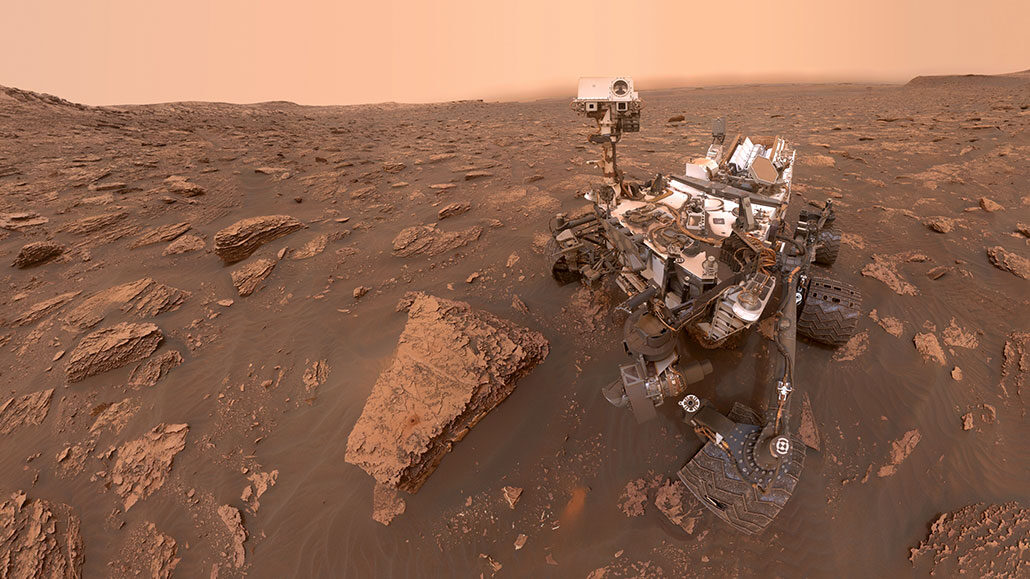Let’s learn about space robots
When people can’t go to another planet, we send a robot instead

This is a selfie of the Mars Curiosity rover, which landed on Mars in 2012. It’s still finding out new things about the Red Planet
NASA/JPL-Caltech
There are lots of places in the universe people would like to explore. They want to go to Mars or Saturn’s moon Titan, and see if they could hold signs of life. Scientists want to peer into the gassy atmosphere of Jupiter, or explore the cold surface of Pluto.
But while some of these places might hold new forms of life, they aren’t very good at holding humans. People may soon travel to the Moon or Mars, but they will need to bring everything with them, from food to their own oxygen. The journeys are long and dangerous — and expensive. In many cases, it’s much easier to send a robot.
Space exploration by robot still isn’t cheap or easy. These robots cost billions of dollars, and sometimes they break. But robots have many advantages over humans. For instance, they don’t require food, water or oxygen. And robots can be very handy space explorers. They can take samples and help scientists find out if a planet’s surface could host life. Other robots use lasers to scout below the surface of Mars to find out what they are made of — and if there are quakes. And they can send back pictures — giving us a glimpse of places most of us will never go.
Want to know more? We’ve got some stories to get you started:
Quake-scouting lander safely touches down on Mars: NASA’s InSight lander arrived safely on the Martian surface. Its mission is to record any ‘Marsquakes’ and other signs of the planet’s geologic activity. (11/28/2018) Readability: 8.5
What the Curiosity rover has learned about Mars so far: Scientists take stock of what the Curiosity rover has learned after five years on Mars — and what else it may turn up. (8/5/2017) Readability: 7.7
Wiggly wheels might help rovers plow through loose lunar soils: A new design lets wheels ascend hills too steep for regular robots and paddle through loose soils without getting stuck. (6/26/2020) Readability: 6.0

Educators and Parents, Sign Up for The Cheat Sheet
Weekly updates to help you use Science News Explores in the learning environment
Thank you for signing up!
There was a problem signing you up.
Explore more
Star Wars‘ cutest droids would get stuck on the beach
Keeping space missions from infecting Earth and other worlds
Juno’s knocking on Jupiter’s door
The ultimate getaway — visiting the Red Planet
Robotic arms aren’t as complicated as they look. Here’s a project from NASA’s Jet Propulsion Laboratory to help you design and build your own.







